From Settlement Abandonment to Valorisation and Enjoyment Strategies: Insights through EU (Portuguese, Italian) and Non-EU (Albanian) ‘Ghost Towns’
Abstract
:1. Introduction
2. Materials and Methods
3. Results
3.1. Vilarinho da Furna: The Underwater Village
3.1.1. Geographical and Historical Background
3.1.2. Territorial and Geological Settings
3.1.3. Geomorphological Setting
3.1.4. Current Valorisation and Enjoyment
3.2. Campomaggiore Vecchio: The Double Abandonment
3.2.1. Geographical and Historical Background
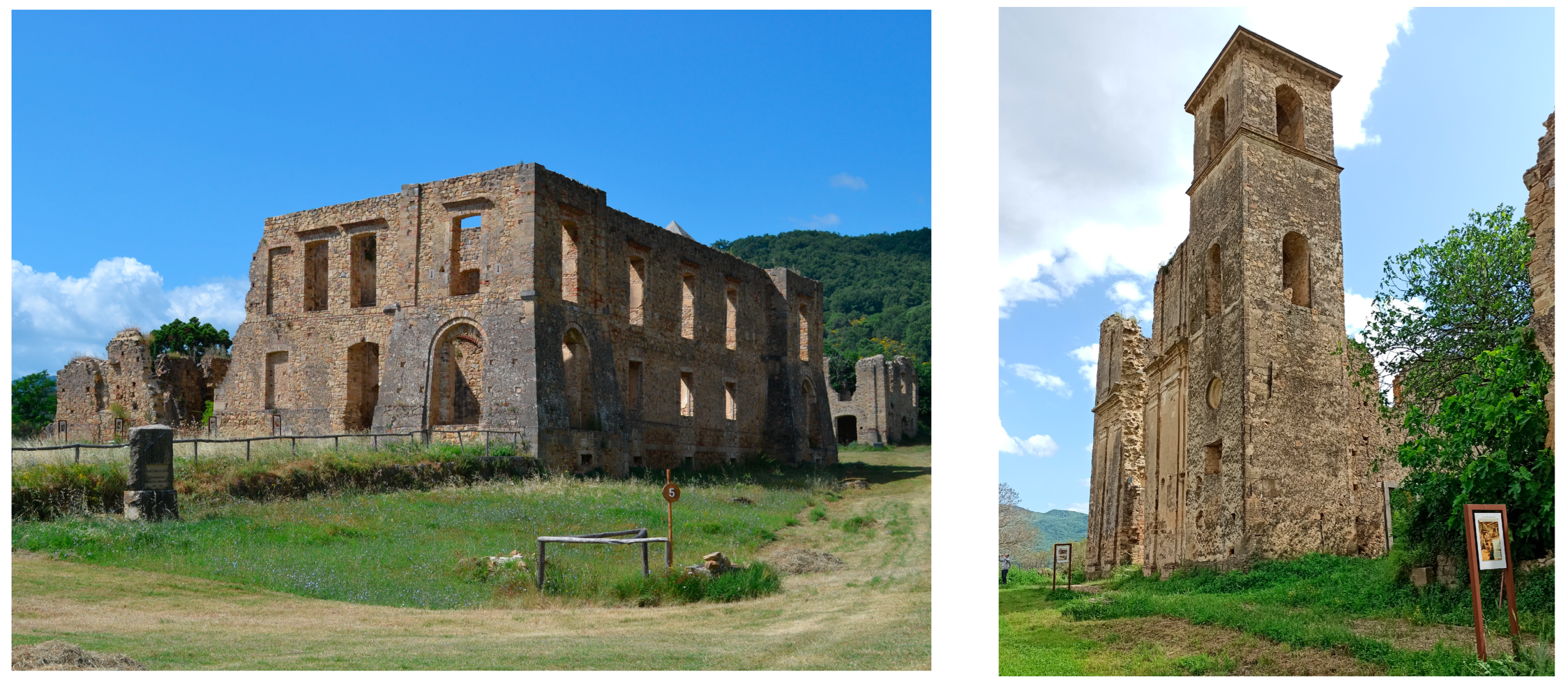

3.2.2. The (Last) Abandonment of the Village: The 1885 Landslide
3.2.3. The Transfer of the Village
3.2.4. Geological Background
3.2.5. Geomorphological Setting
The Landslide of Campomaggiore Vecchio
3.2.6. Current Valorisation and Enjoyment
3.3. Old Himare: The Multiple and Competing Causes of Abandonment
3.3.1. Geographical and Historical Background
3.3.2. Geological Setting
3.3.3. Geomorphological Setting
3.3.4. Natural Hazards in Himare
Mass Movements
Earthquakes
3.3.5. Current Valorisation and Enjoyment
4. Discussion
5. Conclusions
Author Contributions
Funding
Data Availability Statement
Acknowledgments
Conflicts of Interest
| 1 | ASDPC (Archivio storico del Dipartimento della Protezione Civile). Foto area di Campomaggiore vecchio (1966) |
| 2 | ASPZ (Archivio di Stato di Potenza). Intendenza di Basilicata (1806–1860), Costruzione della Chiesa. B. 940, Fasc. 87 |
| 3 | ASPZ (Archivio di Stato di Potenza). Fondo Intendenza di Basilicata (1806–1860). Terremoto del 1857. Danni a Campomaggiore. Busta 1371 |
| 4 | ASPZ (Archivio di Stato di Potenza). Fondo Prefettura. Atti amministrativi (1878–1882), Lettera del Prefetto di Potenza al Sindaco di Campomaggiore, Potenza 11 luglio 1878. Busta 371, Fasc. 6 |
References and Notes
- WPH. World Population Highlights 2007: Urbanization. 2007. Available online: https://www.prb.org/resources/%20world-population-highlights-2007-urbanization/ (accessed on 4 April 2024).
- EC. Urbanisation Worldwide. Competence Centre on Foresight of the European Commission. 2020. Available online: https://knowledge4policy.ec.europa.eu/foresight/topic/continuing-urbanisation/urbanisation-worldwide_en (accessed on 4 April 2024).
- East, M. Integrated approaches and interventions for the regeneration of abandoned towns in southern Italy. In From Conflict to Inclusion in Housing: Interaction of Communities, Residents and Activists; Cairns, G., Artopoulos, G., Day, K., Eds.; UCL Press: London, UK, 2017; pp. 87–102. Available online: https://www.jstor.org/stable/j.ctt1xhr55k.12 (accessed on 20 December 2023).
- Beresford, M.W.; Hurst, J.G. Deserted Medieval Villages; Lutterworth: Guildford, UK, 1971. [Google Scholar]
- Demians D’archimbaud, G. Archéologie du village désertè. Ann. Èconomies Sociétès Civilis. 1974, 29, 834–837. [Google Scholar]
- Cameron, C.M.; Tomka, S.A. Abandonment of Settlements and Regions: Ethnoarchaeological and Archaeological Approaches; Cambridge University Press: New York, NY, USA, 1993. [Google Scholar]
- Diamond, J. Collapse: How Societies Choose to Fail or Succeed; Penguin Books: London, UK, 2005. [Google Scholar]
- Beard, M. The Fires of Vesuvius: Pompeii Lost and Found; Harvard University Press: Cambridge, MA, USA, 2010. [Google Scholar]
- Lasaponara, R.; Masini, N. Full-waveform airborne laser scanning for the detection of medieval archaeological microtopographic relief. J. Cult. Herit. 2009, 10, e78–e82. [Google Scholar] [CrossRef]
- Gizzi, F.T.; Bentivenga, M.; Lasaponara, R.; Danese, M.; Potenza, M.R.; Sileo, M.; Masini, N. Natural Hazards, Human Factors, and “Ghost Towns”: A Multi-Level Approach. Geoheritage 2019, 11, 1533–1565. [Google Scholar] [CrossRef]
- Galadini, F. Ruins and Remains as a Background: Natural Catastrophes, Abandonment of Medieval Villages, and the Perspective of Civilization during the 20th Century in the Central Apennines (Abruzzi Region, Central Italy). Sustainability 2022, 14, 9517. [Google Scholar] [CrossRef]
- Bentivenga, M.; Pescatore, E.; Piccarreta, M.; Gizzi, F.T.; Masini, N.; Giano, S.I. Geoheritage and Geoconservation, from Theory to Practice: The Ghost Town of Craco (Matera District, Basilicata Region, Southern Italy). Sustainability 2024, 16, 2761. [Google Scholar] [CrossRef]
- Masini, N.; Abate, N.; Gizzi, F.T.; Vitale, V.; Minervino Amodio, A.; Sileo, M.; Biscione, M.; Lasaponara, R.; Bentivenga, M.; Cavalcante, F. UAV LiDAR Based Approach for the Detection and Interpretation of Archaeological Micro Topography under Canopy—The Rediscovery of Perticara (Basilicata, Italy). Remote Sens. 2022, 14, 6074. [Google Scholar] [CrossRef]
- Duda, A. Tourist photography and heritage. The case of the abandoned city of Pripyat. J. Herit. Tour. 2023, 18, 384–400. [Google Scholar] [CrossRef]
- Pirlone, F. I Borghi Antichi Abbandonati. Patrimonio da Riscoprire e Mettere in Sicurezza; Franco Angeli Editore: Milano, Italy, 2016; ISBN 9788891740588. (In Italian) [Google Scholar]
- Peyton, P.M. The Archaeology of Abandonment Ghost Towns of the American West. Ph.D. Thesis, School of Archaeology and Ancient History, University of Leicester, Leicester, UK, 2012. [Google Scholar]
- Larrain, B.F.; Sachs, J.D.; Warner, A. A Structural Analysis of Chile’s Long-Term Growth: History, Prospects and Policy Implications; Paper prepared for the Government of Chile; Columbia University: New York, NY, USA, 2000. [Google Scholar] [CrossRef]
- Sterling, C. Spectral Anatomies: Heritage, Hauntology and the ‘Ghosts’ of Varosha. Present Pasts 2014, 6, 1–15. [Google Scholar] [CrossRef]
- Nag, A.; Mishra, S. Mining Ghost Town Revitalization through Heritage Tourism Initiatives. J. Min. Environ. 2024, 15, 439–461. [Google Scholar] [CrossRef]
- Nunes, C.H.; Roeder, F. Tourism and algarve’s underwater heritage valorisation. A case study. J. Mar. Res. 2014, 11, 35–44. [Google Scholar]
- Bruno, F.; Ricca, M.; Lagudi, A.; Kalamara, P.; Manglis, A.; Fourkiotou, A.; Papadopoulou, D.; Veneti, A. Digital Technologies for the Sustainable Development of the Accessible Underwater Cultural Heritage Sites. J. Mar. Sci. Eng. 2020, 8, 955. [Google Scholar] [CrossRef]
- Pérez-Reverte Mañas, C.; Cerezo Andreo, F.; López Osorio, P.; González Gallero, R.; Mariscal Rico, L.; Arévalo González, A. Underwater Cultural Heritage as an Engine for Social, Economic and Cultural Development. State of Research at the University of Cadiz (Andalusia, Spain). Heritage 2021, 4, 2676–2690. [Google Scholar] [CrossRef]
- Lennon, J.J.; Foley, M. Dark Tourism: The Attraction of Death and Disaster; Continuum: London, UK, 2000; p. 184. [Google Scholar]
- Binik, O. The dark tourism phenomenon in contemporary society: A critical review of literature. Rass. Ital. Di Sociol. 2016, 57, 551–574. [Google Scholar]
- Salazar, N.B. The local-to-global dynamics of world heritage interpretation. In World Heritage, Tourism and Identity: Inscription and Co-Production, 1st ed.; Bourdeau, L., Gravari-Barbas, M., Robinson, M., Eds.; Routledge: London, UK, 2015; p. 10. [Google Scholar] [CrossRef]
- Chen, J.S. Travel Motivation of Heritage Tourists. The Heritage Tourist Experience: Critical Essays, 1st ed.; Routledge: London, UK, 2017; Volume 2, p. 548. [Google Scholar] [CrossRef]
- Timothy, D.J. Cultural Heritage and Tourism: An Introduction, 2nd ed.; Channel View Publications: Bristol, UK, 2020; p. 549. [Google Scholar]
- Decree Law 1971. Decreto n.º 187/71, de 8 de Maio—Cria o Parque Nacional da Peneda-Gerês. Diário do Governo n.º 108/1971, Série I de 1971-05-08; pp. 657–661.
- Djajkovski, P. Underwater Ghost Village in Portugal, Vilarinho da Furna. 2017. Available online: https://www.abandonedspaces.com/towns/underwater-ghost-village-in-portugal-vilarinho-da-furna.html (accessed on 7 November 2023).
- Decree Law 1944. Lei 2002—Outorga a Eletricidade de Portugal à Empresa Pública (EDP). 20 de dezembro de 1944.
- Antunes, M.A. Memórias de Vilarinho da Furna—Uma Aldeia Afundada; Grupo Folclórico Verde Minho: Loures, Portugal, 2018; p. 21. [Google Scholar]
- Trigo, R.; DaCâmara, C. Circulation weather types and their influence in the precipitation regime in Portugal. Int. J. Climatol. 2000, 20, 1559–1581. [Google Scholar] [CrossRef]
- Daveau, S.; Coelho, C.; Costa, V.G.; Carvalho, L. Répartition et Rhytme des Precipitations au Portugal. Memórias do Centro de Estudos Geográficos 3; Centro de Estudos Geográficos: Lisboa, Portugal, 1977; p. 192. [Google Scholar]
- Pereira, P.; Pereira, D.I. The Granite and Glacial Landscapes of the Peneda-Gerês National Park. In Landscapes and Landforms of Portugal. World Geomorphological Landscapes; Vieira, G., Zêzere, J., Mora, C., Eds.; Springer: Berlin/Heidelberg, Germany, 2020. [Google Scholar] [CrossRef]
- Dias, G.; Leterrier, J.; Mendes, A.; Simões, P.; Bertrand, J. U-Pb zircon and monazite geochronology of post-collisional Hercynian granitoids from the Central Iberian Zone (Northern Portugal). Lithos 1988, 45, 349–369. [Google Scholar] [CrossRef]
- Mendes, A.; Dias, G. Mantle like Sr-Nd isotope composition of Fe-K subalkaline granites: The Peneda-Gêres Variscan massif (NW Iberian Peninsula). Terra Nova 2004, 16, 109–115. [Google Scholar] [CrossRef]
- Lima, A.S. Modelo Conceptual da Ocorrência Hidromineral do Gerês: Fundamentos Sobre a Delimitação da Área de Recarga do Sistema Hidrotermal; Artigo em Ata de Conferência; 2011; pp. 169–182. ISBN 978-989-97402-0-4. Available online: https://www.rcaap.pt/detail.jsp?id=oai:repositorium.sdum.uminho.pt:1822/15148 (accessed on 18 July 2024).
- Cloetingh, S.; Burov, E.; Beekman, F.; Andeweg, B.; Andriessen, P.A.M.; García-Castellanos, D.; De Vicente, G.; Vegas, R. Lithospheric folding in Iberia. Tectonics 2002, 21, 1041–1067. [Google Scholar] [CrossRef]
- Cunha, P.P.; Pimentel, N.L.; Pereira, D.I. Assinatura tectono-sedimentar do auge da compressão bética em Portugal. A descontinuidade Valesiano terminal-Turoliano. Ciências Da Terra 2000, 14, 61–72. [Google Scholar]
- Cabral, J. Neotectonics of mainland Portugal: State of the art and future perspectives. J. Iber. Geol. 2012, 38, 71–84. [Google Scholar] [CrossRef]
- Pereira, D.I.; Pereira, P.; Santos, L.; Silva, J. Unidades Geomorfológicas de Portugal Continental. Rev. Bras. Geomorfol. 2014, 15, 567–583. [Google Scholar] [CrossRef]
- Coudé-Gaussen, G. Coudé-Gaussen, Geneviève. Les Serras da Peneda et do Gerês (Minho, Portugal): étude Géomorphologique; Centro de Estudos Geográficos: Lisboa, Portugal, 1981; 275p. [Google Scholar]
- Ferreira, A.B.; Vidal Romani, J.R.; Zêzere, J.L.; Rodrigues, M.L. A Glaciação Plistocénica da Serra do Gerês. Vestígios Geomorfológicos e Sedimentológicos. Relatório 37; Centro de Estudos Geográficos: Lisboa, Portugal, 1999; p. 150. [Google Scholar]
- Vidal Romani, J.R.; Vaqueiro, M.; Sanjurjo, J. Granite Landforms in Galicia. In Landscapes and Landforms of Spain. World Geomorphological Landscapes Series; Gutiérrez, F., Gutiérrez, M., Eds.; Springer: Berlin/Heidelberg, Germany, 2014; pp. 63–69. [Google Scholar]
- Girão, A.A. Glaciação Quaternária na Serra do Jures. Bol. Cent. Estud. Geográficos 1958, 11, 13–22. [Google Scholar]
- Hughes, P.; Woodward, J.; Gibbard, P. Quaternary glacial history of the Mediterranean Mountains. Prog. Phys. Geogr. 2006, 30, 334–364. [Google Scholar] [CrossRef]
- Pereira, P.; Pereira, D.I. Geomorfologia glaciária e peri-glaciária em Portugal. Contributo para a inventariação do património geológico português. Publicações Assoc. Port. Geomorfólogos 2009, 6, 279–284. [Google Scholar]
- Pereira, D.I.; Pereira, P.; Brilha, J.; Cunha, P.P. The Iberian Massif landscape and fluvial network in Portugal: A geoheritage inventory based on scientific value. Proced. Geol. Assoc. 2015, 126, 252–265. [Google Scholar] [CrossRef]
- Brilha, J.B.; Pereira, P. Geoconservation in Portugal with emphasis on the geomorphological heritage. In Landforms and Landscapes of Portugal; Vieira, G., Zêzere, J.L., Mora, C., Eds.; World geomorphological Landscape Series; Springer: Berlin/Heidelberg, Germany, 2020. [Google Scholar]
- Antunes, M.A. Vilarinho da Furna—Uma Aldeia Afundada; A Regra do Jogo Edições: Lisboa, Portugal, 1985. [Google Scholar]
- EMVF (Terras de Bouro, Portugal). Ethnographic Museum of Vilarinho da Furna. Number of tourists for the year 2022 and 2023. Personal communication to I.M.H.R.A., 14 June 2024.
- EMVF (Terras de Bouro, Portugal). Ethnographic Museum of Vilarinho da Furna. Number of tourists for the year 2022 and 2023. Personal communication to A.S., 16 May 2024.
- Antunes, M.A. Requiem por Vilarinho da Furna—Uma Aldeia afundada. Coleção Meia Hora de Leitura; Biblioteca da Universidade Lusófona: Lisboa, Portugal, 1994. [Google Scholar]
- AFURNA; ICNB; EDP; CCDRN; INAG; FEUP. Natur parque de Vilarinho da Furna. Brochure. Undated, without publisher, without date.
- Municipality of Terras de Bouro. Personal communication to F.T.G., 28 June 2024.
- Gizzi, F.T.; Sileo, M.; Biscione, M.; Danese, M.; de Buergo, M.A. The conservation state of the Sassi of Matera site (Southern Italy) and its correlation with the environmental conditions analysed through spatial analysis techniques. J. Cult. Herit. 2016, 17, 61–74. [Google Scholar] [CrossRef]
- Gizzi, F.T.; Proto, M.; Potenza, M.R. The Basilicata region (Southern Italy): A natural and ‘human-built’ open-air laboratory for manifold studies. Research trends over the last 24 years (1994–2017). Geomat. Nat. Hazards Risk 2019, 10, 433–464. [Google Scholar] [CrossRef]
- Pescatore, E.; Bentivenga, M.; Giano, S.I. Geoheritage Management in Areas with Multicultural Interest Contexts. Sustainability 2022, 14, 15911. [Google Scholar] [CrossRef]
- Cutinelli, G. (a) Lucania Letteraria, n. 7, Potenza, domenica 29 Marzo 1885.
- Filardi, G. Campomaggiore. Storia di un Paese Lucano; Litostampa Ottaviano: Rionero in Vulture, Italy, 1985. (In Italian) [Google Scholar]
- Rescio, P. Campomaggiore: Archeologia dell’Edilizia Storica; Centro Studi per la Storia della Cultura Materiale nel Mezzogiorno, Tipo-Litografia Cautillo: Vallesaccarda, Italy, 1997. (In Italian) [Google Scholar]
- Damone, G. Lettura Storico Critica di una Ghost Town: Il Progetto Utopico di Campomaggiore; CUES: Fisciano, Italy, 2013; p. 304. (In Italian) [Google Scholar]
- Rescio, P. Un piano per la valorizzazione di Campomaggiore. Basilicata Reg. Not. Agenzia Settim. Di Inf. 2000, 24, 63–66. (In Italian) [Google Scholar]
- Trigila, A.; Iadanza, C.; Bussettini, M.; Lastoria, B. Dissesto Idrogeologico in Italia: Pericolosità e Indicatori di Rischio; ISPRA: Rome, Italy, 2018. (In Italian)
- Gizzi, F.T.; Potenza, M.R. The Scientific Landscape of November 23rd, 1980 Irpinia-Basilicata Earthquake: Taking Stock of (Almost) 40 Years of Studies. Geosciences 2020, 10, 482. [Google Scholar] [CrossRef]
- Locati, M.; Camassi, R.; Rovida, A.; Ercolani, E.; Bernardini, F.; Castelli, V.; Caracciolo, C.H.; Tertulliani, A.; Rossi, A.; Azzaro, R.; et al. Database Macrosismico Italiano (DBMI15), Versione 4.0 [Data Set]; Istituto Nazionale di Geofisica e Vulcanologia (INGV): Rome, Italy, 2022. [CrossRef]
- Ducci, A. Osservazioni geologiche sul territorio di Campomaggiore Nuovo (Potenza) e sulla frana che minaccia l’abitato. Boll. Serv. Geol. D’italia 1950, LXX, 199–223. (In Italian) [Google Scholar]
- Fittipaldi, E. Relazione su disastro di Campomaggiore. Bull. Vulcan. Ital. Period. Dell’osservatorio Ed Arch. Cent. Geodin. 1885, XII, 57–58. (In Italian) [Google Scholar]
- Cutinelli, G. (b) Lucania Letteraria, n. 8, Potenza, domenica 5 aprile 1885. (In Italian).
- De Rossi, M.S. Intorno ad alcuni risultati degli odierni studi sismologici posti in relazione coll’edilizia. Bull. Vulcan. Ital. Period. Dell’osservatorio Ed Arch. Cent. Geodin. 1885, XII, 55–56. (In Italian) [Google Scholar]
- Patacca, E.; Scandone, P. Geology of the southern Apennines, In: Mazzotti A., Patacca E & Scandone P. Eds., The CROP 04 transect. Southern Apennine. Boll. Soc. Geol. Ital. 2007, 7, 75–119. [Google Scholar]
- Mostardini, F.; Merlini, S. Appennino Centro Meridionale. Sezioni geologiche e proposta di modello strutturale. Mem. Soc. Geol. Ital. 1986, 35, 177–202. (In Italian) [Google Scholar]
- Pescatore, T.; Renda, P.; Schiattarella, M.; Tramutoli, M. Stratigraphic and Structural relationships between Meso-Cenozoic Lagonegro basin and coeval carbonate platforms in southern Apennines, Italy. Tectonophysics 1999, 315, 269–286. [Google Scholar] [CrossRef]
- Scandone, P.; Bonardi, G. Synsedimentary tectonics controlling deposition of Mesozoic and Tertiary carbonatic sequences of areas surrounging Vallo di Diano (Southern Appennines). Mem. Soc. Geol. Ital. 1968, 7, 1–10. [Google Scholar]
- Lentini, F.; Carbone, S.; Di Stefano, A.; Guarnieri, P. Stratigraphical and structural constraints in the Lucanian Apennines (southern Italy): Tools for reconstructing the geological evolution. J. Geodyn. 2002, 34, 141–158. [Google Scholar] [CrossRef]
- Piedilato, S.; Prosser, G. Thrust sequences and evolution of the external sector of a fold and thrust belt: An example from the Southern Apennines (Italy). J. Geodyn. 2005, 39, 386–402. [Google Scholar] [CrossRef]
- Ciarapica, G.; Cirlli, S.; Panzanelli Fratoni, R.; Passeri, L.; Zaninetti, L. The Monte Facito Formation (Southern Apennines). Boll. Soc. Geol. Ital. 1990, 109, 135–142. [Google Scholar]
- Palladino, G.; Prosser, G.; Bentivenga, M.; Alsop, G.I. Mass transport deposits overprinted by contractional tectonics: A case study from the southern Apennines of Italy. Geol. Mag. 2019, 156, 849–873. [Google Scholar] [CrossRef]
- Carbone, S.; Catalano, S.; Lentini, F.; Monaco, C. Le unità stratigrafico-strutturali dell’alta val dAgri (Appennino lucano) nel quadro dell’evoluzione del sistema catena-avanfossa. Mem. Soc. Geol. Ital. 1988, 41, 331–341. (In Italian) [Google Scholar]
- Patacca, E.; Scandone, P.; Bellatalla, M.; Perilli, N.; Santini, U. The Numidian-sandevent in the southern Apennines. Mem. Sci. Geol. 1992, 43, 297–337. [Google Scholar]
- Varnes, D.J. Slope movement, types and processes. In Landslides, Analysis and Control; Schuster, R.L., Krizek, R.J., Eds.; National Academy of Sciences, Special Report 176; Transportation Research Board, Commission on Sociotechnical Systems, National Research Council: Washington, DC, USA, 1978; pp. 11–33. [Google Scholar]
- Cruden, D.M.; Varnes, D.J. Landslide types and processes. In Landslides: Investigations and Mitigation, Transportation Research Board; Turner, A.K., Schuster, R.L., Eds.; special report 247; National Academy of Sciences: Washington, DC, USA, 1996; pp. 36–71. [Google Scholar]
- Bruschella, G. Tomografie Geoelettriche per lo Studio Della Frana di Campomaggiore Vecchio. Bachelor’s Thesis, Università degli Studi della Basilicata, Basilicata, Italy, 2003. (In Italian). [Google Scholar]
- Sdao, F.; Simeone, V. Fasi di attivazione e maturità geomorfologica di due frane tipo colata nei pressi di Campomaggiore Vecchio (Basilicata). Geol. Appl. Ed Idrog. 1996, XXXI, 155–168. (In Italian) [Google Scholar]
- Municipality of Campomaggiore. Number of tourists in Campomaggiore vecchio for the years 2022. Personal communication to A.S., 20 April 2024.
- Sinani, S. Himara: Community identity and ethnotype. In Himara in the Centuries; Prifti, K., Nasi, L., Eds.; Academy of Sciences: Tirana, Albania, 2004; pp. 320–352. [Google Scholar]
- Valentini, G. Contributions to the Albanian Chronology; Rome, Italy, 1944; p. 404.
- Zamputi, I. Documents of the XVI–XII Centuries for the History of Albania; Academy of Sciences: Tirana, Albania, 1989; Volume I, pp. 353–355. [Google Scholar]
- Frashëri, K. Himara and the Ethnicity of the Himara People; “Toena” Publishing House: Tirana, Albania, 2005; p. 104. ISBN 99927-1-951-6. [Google Scholar]
- Sathas, C.N. Documents Relating to the History of Greece or the Middle Ages; Paris, France, 1886; Volume VI, p. 236.
- Zamputi, I. Documents of the XV Century on the History of Albania; Tirana, Albania, 1967; Volume IV (1479–1506), part I (1479–1499), pp. 100–101
- Thëngjilli, P. Aspects of the Himara people’s efforts for freedom (XVI–XVIII centuries). Science Academy. In Himara in the Centuries; Prifti, K., Nasi, L., Eds.; Academy of Sciences: Tirana, Albania, 2004; pp. 124–149. [Google Scholar]
- Muceku, Y.; Koçi, R.; Mustafaraj, E.; Korini, O.; Dushi, E.; Duni, L. Earthquake-triggered mass movements in Albania. Acta Geod. Geophys. 2021, 56, 439–470. [Google Scholar] [CrossRef]
- Bërxholi, A. Land administrative organization of the coast after 1913 until today. In Himara in the Centuries; Prifti, K., Nasi, L., Eds.; Academy of Sciences: Tirana, Albania, 2004; pp. 228–235. [Google Scholar]
- Prrenjasi, E.; Çuri, F.; Iliazi, F. Geological Map of the Himare Region, Scale: 12500; Albanian Geological Service: Tirana, Albania, 1980. [Google Scholar]
- Muceku, Y.; Lamaj, M.; Milushi, I.; Onuzi, K.; Avxhiu, A. Preliminary results of the Albanian geotechnical map at the scale 1:200000: A case study. Albanian J. Nat. Tech. Sci. 2019, 50, 7–25. [Google Scholar]
- Sulstarova, E.; Koçiaj, S. Earthquakes Catalog; Institute of Geosciences, Polytechnic University of Tirana: Tirana, Albania, 1974; pp. 113–115. [Google Scholar]
- Aliaj, S.; Kociu, S.; Muco, B.; Sulstarova, E. Seismicity, seismotectonics and seismic hazard assessmentin Albania. Academy of Sciences of Albania. Monography 2010, 13, 95–230. [Google Scholar]
- Muceku, Y.; Lamaj, M. The importance and needs of engineering geological mapping in the development and urban planning of Albania. Bull. Geol. Sci. 2009, 2, 99–118. [Google Scholar]
- Muço, B. Probabilistic seismic hazard assessment in Albania. Ital. J. Geosci. 2013, 132, 194–202. [Google Scholar] [CrossRef]
- Papazachos, B.C.; Savvaidis, A.S.; Papazachos, C.B.; Papaioannou, C.A.; Kiratzi, A.A.; Muço, B.; Kociuand, S.; Sulstarova, E. Atlas of Isoseismic Maps for Shallow Earthquakes in Albania and Surrounding Area (1851–1990); Publication No 10; University of Thessaloniki, Geophysical Laboratory: Thessaloniki, Greece, 2001; pp. 4–48. [Google Scholar]
- Albanian Cultural Institute (, Tirana, Albania, Country). Number of tourists in Old Himare for the years 2022 and 2023. Personal communication to A.S. 2023.
- Drouga, V.; Sarantakou, E. The Promotion of Underwater Cultural Heritage Sites in the Digital Era: The Case of Peristera Classical Shipwreck in Alonissos. In Recent Advancements in Tourism Business, Technology and Social Sciences; Katsoni, V., Cassar, G., Eds.; IACuDiT 2023; Springer Proceedings in Business and Economics; Springer: Cham, Switzerland, 2024; pp. 833–844. [Google Scholar] [CrossRef]
- Güzden, V. Assessing a Decade of Kas¸ Underwater Archaeopark. Int. J. Naut. Archaeol. 2020, 49, 74–86. [Google Scholar] [CrossRef]
- Cho, H. The challenges and needs of museums in safeguarding underwater cultural heritage. Mus. Manag. Curatorship 2014, 29, 429–444. [Google Scholar] [CrossRef]
- Jung, R.-T.; Isshiki, H. Application of tidal energy for purification in fresh water lake. Int. J. Nav. Archit. 2015, 7, 212–225. [Google Scholar] [CrossRef]
- Edney, J.; Dimmock, K.; Boyd, W.E. Understanding Diver Behavior on Underwater Cultural Heritage: Enriching the Observation Record Using Video Methods. Sustainability 2021, 13, 5601. [Google Scholar] [CrossRef]
- Set, K.; Mohd Salleh, N.H.; Mhd Rashid, M.; Nasir, A. An exploratory study on professional competencies of scuba dive guides in Malaysia. J. Sustain. Sci. Manag. 2023, 18, 137–158. [Google Scholar] [CrossRef]
- Poulos, S.E.; Panagopoulou, A.; Kotinas, C. An oceanographic insight in the submergence and resilence of the Pavlopetri archaeological site. Sci. Cult. 2022, 8, 161–173. [Google Scholar]
- Manju, T.; Francis, A.; Sankar, N.; Azzarudin, T.; Magesh, B. VR Based Underwater Museum of Andaman and Nicobar Islands. In Information and Communication Technology for Intelligent Systems. ICTIS 2020. Smart Innovation, Systems and Technologies; Senjyu, T., Mahalle, P.N., Perumal, T., Joshi, A., Eds.; Springer: Singapore, 2021; Volume 196, pp. 627–632. [Google Scholar] [CrossRef]
- Ricca, M.; Alexandrakis, G.; Bonazza, A.; Bruno, F.; Davidde Petriaggi, B.; Elkin, D.; Lagudi, A.; Nicolas, S.; Novák, M.; Papatheodorou, G.; et al. A Sustainable Approach for the Management and Valorization of Underwater Cultural Heritage: New Perspectives from the TECTONIC Project. Sustainability 2020, 12, 5000. [Google Scholar] [CrossRef]
- Anderson, E.F.; McLoughlin, L.; Liarokapis, F.; Peters, C.; Petridis, P.; de Freitas, S. Developing serious games for cultural heritage: A state-of-the-art review. Virtual Real 2010, 14, 255–275. [Google Scholar] [CrossRef]
- Fernandez, M. Augmented virtual reality: How to improve education systems. High. Learn. Res. Commun. 2017, 7, 1–15. Available online: https://biblioproxy.cnr.it:2481/10.18870/hlrc.v7i1.373 (accessed on 20 April 2024). [CrossRef]
- Bazán, R. Iberia emergida, ¿memoria sumergida? La Tadeo DeArte 2019, 5, 82–95. (In Portuguese) [Google Scholar] [CrossRef]
- Camprubí, L. (2019). Ante la Pertinaz Sequía: ¿qué hacemos con Franco y sus Pantanos? El Mundo, 12 March 2019. Available online: https://www.elmundo.es/opinion/2019/03/11/5c866fec21efa07c128b4576.html (accessed on 18 July 2024). (In Portuguese).
- Fabros, M.G.M.; Lopez, E.L.F.; Roma, M.N. Dark tourism in the Philippine context: Indicators, motivations, and spectrum. Soc. Sci. Humanit. Open 2023, 7, 100452. [Google Scholar] [CrossRef]
- Swer, G.M. Towards a Phenomenology of Dark Tourist Experiences. In Tourism and Culture in Philosophical Perspective; Zovko, M.E., Dillon, J., Eds.; Springer Verlag: Berlin/Heidelberg, Germany, 2023; pp. 153–166. [Google Scholar]
- Proos, E.; Hattingh, J. Dark tourism: Growth potential of niche tourism in the Free State Province, South Africa. Dev. South. Afr. 2022, 39, 303–320. [Google Scholar] [CrossRef]
- Chakraborty, O. Exploring Niche Tourism Business Models, Marketing, and Consumer Experience Dark tourism: A novel trending sector in tourism—A study in the Indian subcontinent. In Exploring Niche Tourism Business Models, Marketing, and Consumer Experience, Business Science Reference; Rodrigues, A.A., Carvalho, A.M., Eds.; IGI Global: Hershey, PA, USA, 2023; pp. 158–186. [Google Scholar]
- Benden, L. Walking the Streets of a Nuclear Ghost Town–Dark Tourism in Pripyat (Chernobyl). Dissertation Submitted in Partial Fulfilment of Requirements for the MSc in Management with Specialisation in Strategic Marketing, at the Universidade Católica Portuguesa. 2021. Available online: https://repositorio.ucp.pt/bitstream/10400.14/38113/1/202964833.pdf (accessed on 14 March 2024).
- Azzaro, R.; Cascone, M.; Amantia, A. “Earthquakes and ghost towns in Sicily: From the Valle del Belìce in 1968 to the Val di Noto in 1693. The first stage of the virtual seismic itinerary through Italy”. Ann. Geophys. 2020, 63, SE106. [Google Scholar] [CrossRef]
- Cerulli, D.; Scott, M.; Aunap, R.; Kull, A.; Pärn, J.; Holbrook, J.; Mander, Ü. The Role of Education in Increasing Awareness and Reducing Impact of Natural Hazards. Sustainability 2020, 12, 7623. [Google Scholar] [CrossRef]
- Pisa, P.F. Understanding memory transmission in disaster risk reduction practices: A case study from Japan. Int. J. Disaster Risk Reduct. 2024, 100, 104–112. [Google Scholar] [CrossRef]
- Nakada, S. Characteristics of recent geohazards and roles of geoparks. Rend. Online Soc. Geol. Ital. 2013, 28, 117–120. [Google Scholar]
- Al-Halbouni, D.; AlRabayah, O.; Nakath, D.; Rüpke, L. A Vision on a UNESCO Global Geopark at the Southeastern Dead Sea in Jordan—How Natural Hazards May Offer Geotourism Opportunities. Land 2022, 11, 553. [Google Scholar] [CrossRef]
- Gizzi, F.T.; Kam, J.; Porrini, D. Time windows of opportunities to fight earthquake under-insurance: Evidence from Google Trends. Humanit. Soc. Sci. Commun. 2020, 7, 61. [Google Scholar] [CrossRef]
- Bian, Q.; Liang, Y.; Ma, B. Once bitten, twice shy? Does the public adopt more disaster preparedness practices after experiencing more disasters? Int. J. Disaster Risk Reduct. 2022, 77, 103057. [Google Scholar] [CrossRef]
- Bruner, E. Abraham Lincoln as Authentic Reproduction: A Critique of Postmodernism. Am. Anthropol. 1994, 96, 397–415. [Google Scholar] [CrossRef]
- Barthel, D. Historic Preservation. Collective Memory and Historic Identity; Rutgers University Press: New Brunswick, NJ, USA, 1996. [Google Scholar]
- DeLyser, D. Authenticity on the Ground: Engaging the Past in a California Ghost Town. Ann. Assoc. Am. Geogr. 1999, 89, 602–632. [Google Scholar] [CrossRef]
- Serrat, O. Storytelling. In Knowledge Solutions; Springer: Singapore, 2017. [Google Scholar] [CrossRef]
- Corallo, A.; Esposito, M.; Marra, M.; Pascarelli, C. Transmedia digital storytelling for cultural heritage visiting enhanced experience. In Proceedings of the International Conference on Augmented Reality, Virtual Reality and Computer Graphics, Santa Maria al Bagno, Italy, 24–27 June 2019; Springer: Cham, Switzerland, 2019; pp. 221–229. [Google Scholar]
- Petousi, D.; Katifori, A.; Servi, K.; Roussou, M.; Ioannidis, Y. Interactive Digital Storytelling in Cultural Heritage: The Transformative Role of Agency. In Interactive Storytelling. ICIDS 2022; Vosmeer, M., Holloway-Attaway, L., Eds.; Lecture Notes in Computer Science; Springer: Cham, Switzerland, 2022; Volume 13762. [Google Scholar] [CrossRef]
- Kasemsarn, K.; Harrison, D.; Nickpour, F. Applying Inclusive Design and Digital Storytelling to Facilitate Cultural Tourism: A Review and Initial Framework. Heritage 2023, 6, 1411–1428. [Google Scholar] [CrossRef]
- Colucci Cante, L.; Di Martino, B.; Graziano, M.; Branco, D.; Pezzullo, G.J. Automated Storytelling Technologies for Cultural Heritage. In Advances in Internet, Data & Web Technologies; Barolli, L., Ed.; EIDWT 2024. Lecture Notes on Data Engineering and Communications Technologies; Springer: Cham, Switzerland, 2024; Volume 193. [Google Scholar] [CrossRef]
- Melpignano, C.; Azara, I. Conserving Italian World Heritage Sites Through Live Music Events: Exploring Barriers and Opportunities. Event Manag. 2019, 23, 641–654. [Google Scholar] [CrossRef]
- Liu, X.; Li, Y.; Zhang, Z.; Wang, Q. Cultural Heritage Resource Development and Industrial Transformation Resource Value Assessment based on BP Neural Network. Comput. Intel Neurosci. 2022, 2022, 2288358. [Google Scholar] [CrossRef] [PubMed]
- Allan, M. Geotourism: An opportunity to enhance geoethics and boost geoheritage appreciation. Geol. Soc. Spec. Publ. 2015, 419, 25–29. [Google Scholar] [CrossRef]
- Reyes, C.A.R.; Muñoz-Quintero, S.I.; Acevedo-Charry, O. Geotourism as a strategy of sustainable rural development of the Paipa—Iza volcanic complex in the eastern Andes of Colombia: An innovative approach. Tur. Soc. 2022, 31, 281–301. [Google Scholar] [CrossRef]

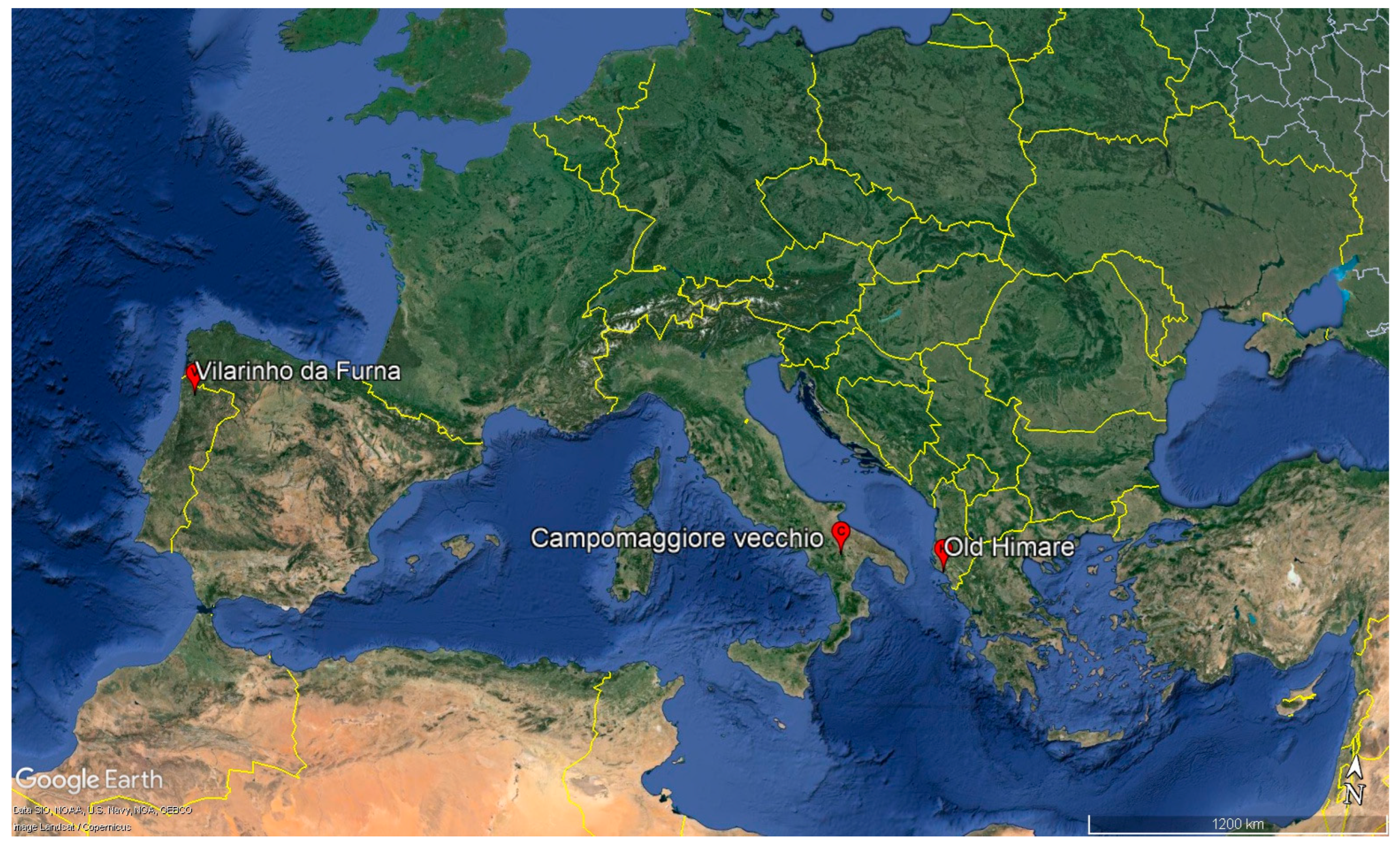



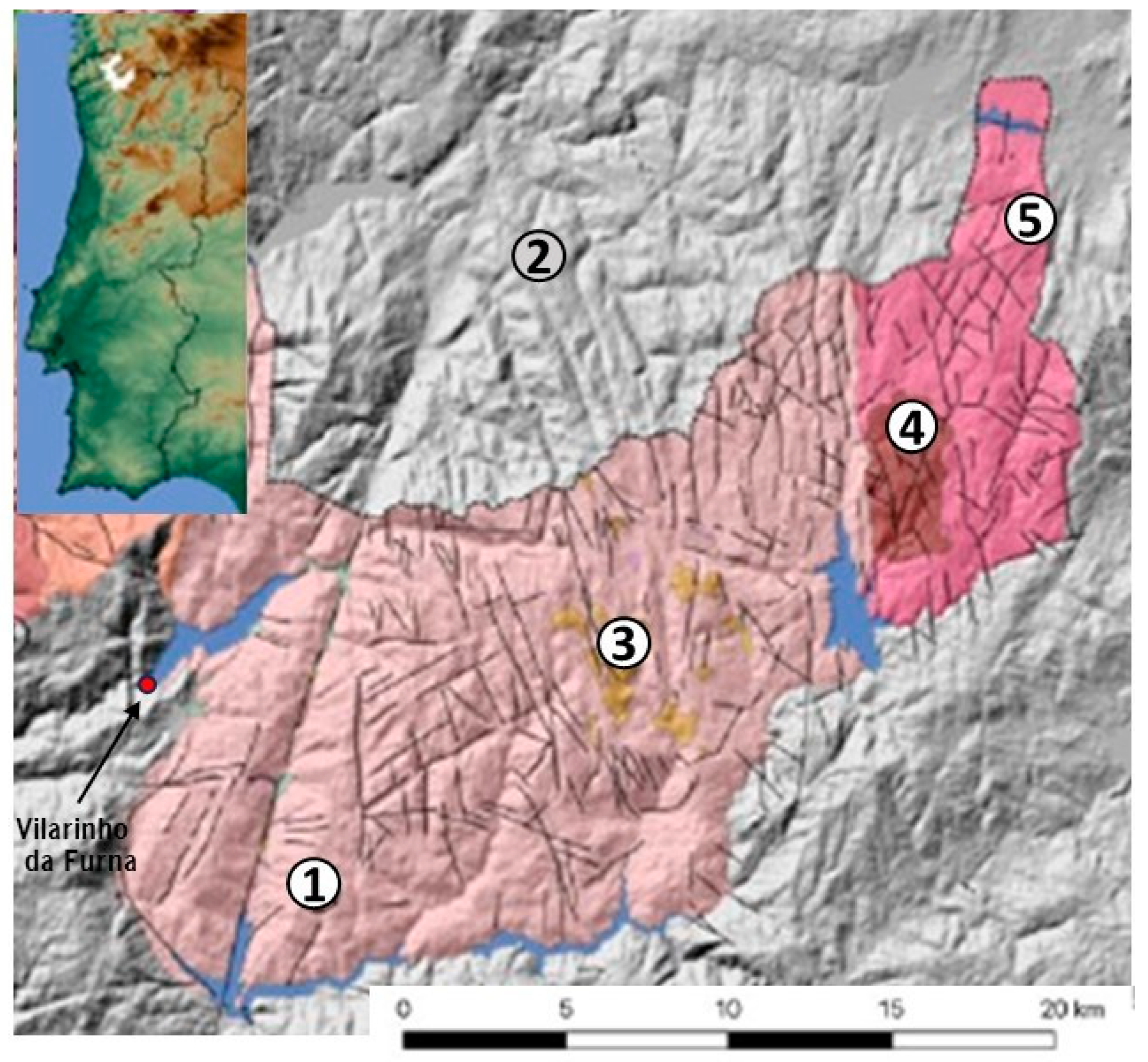


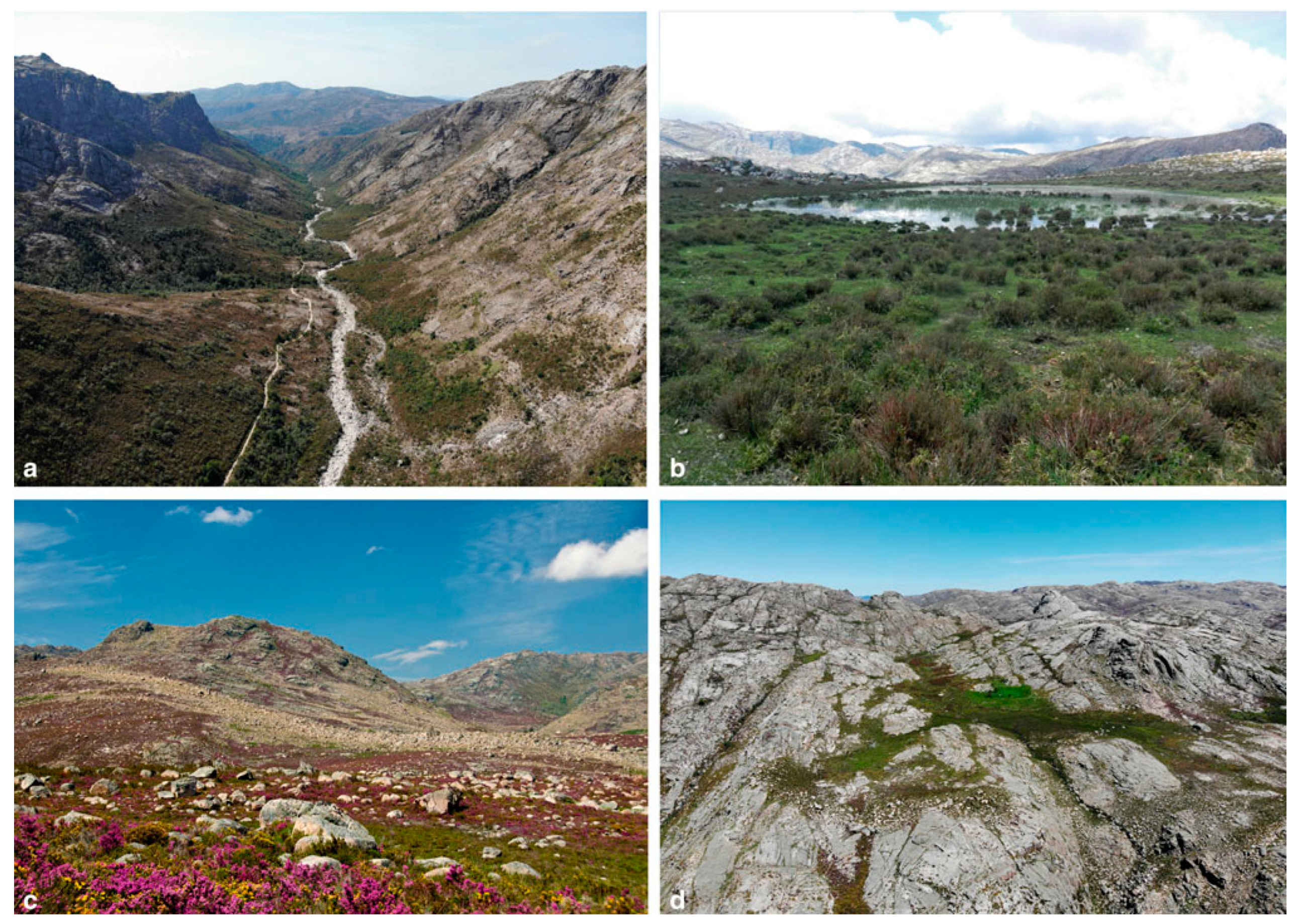

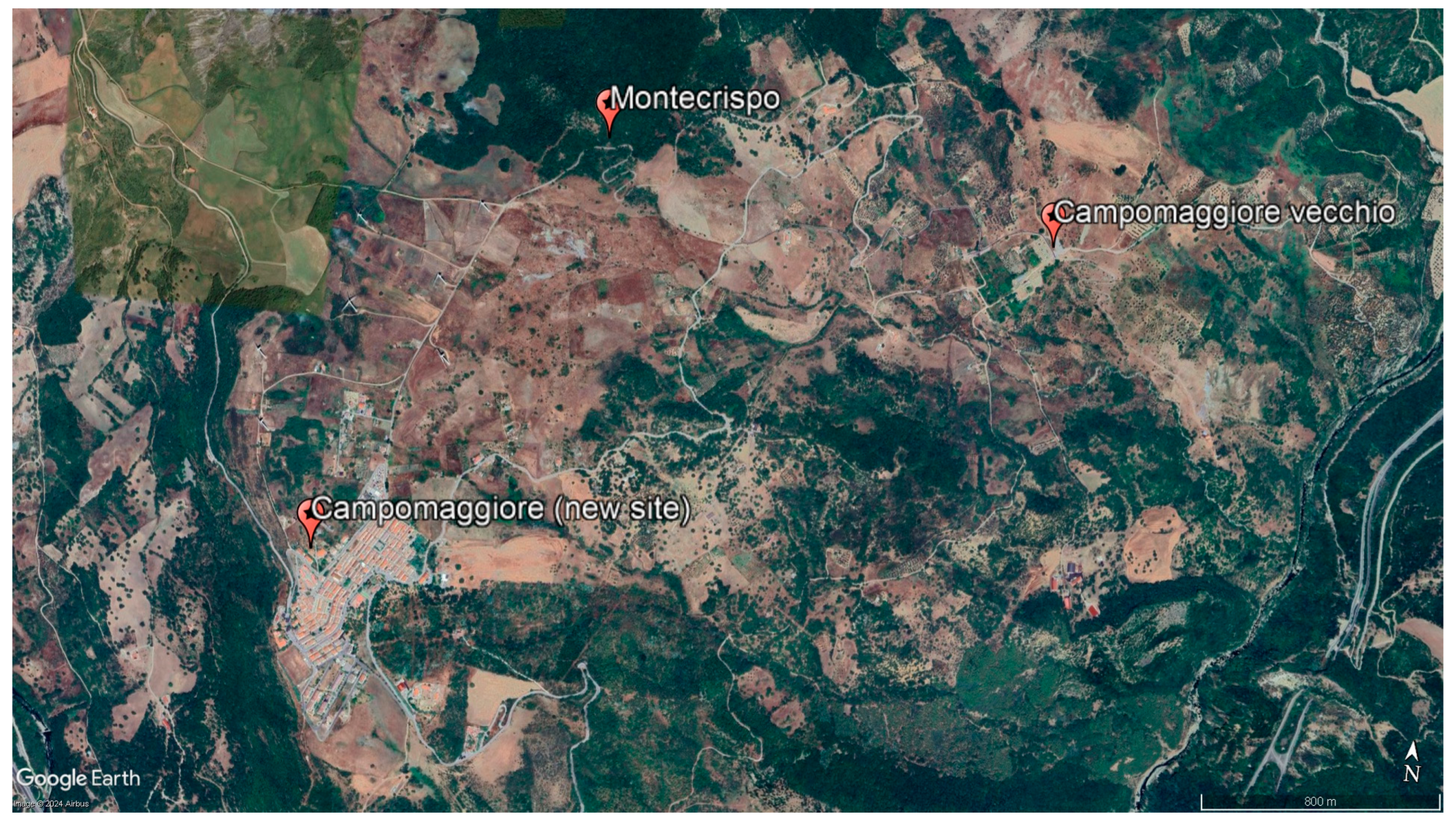

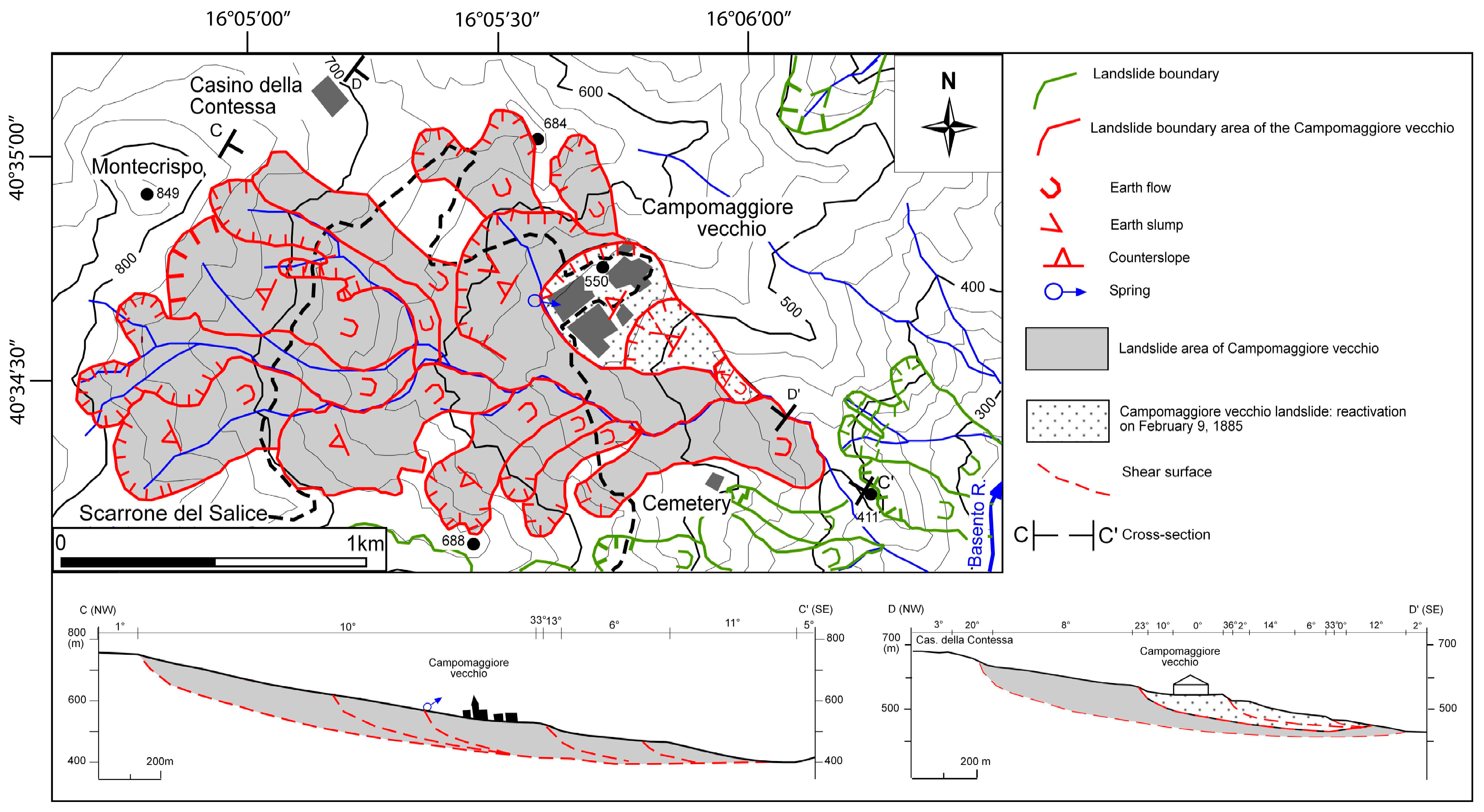
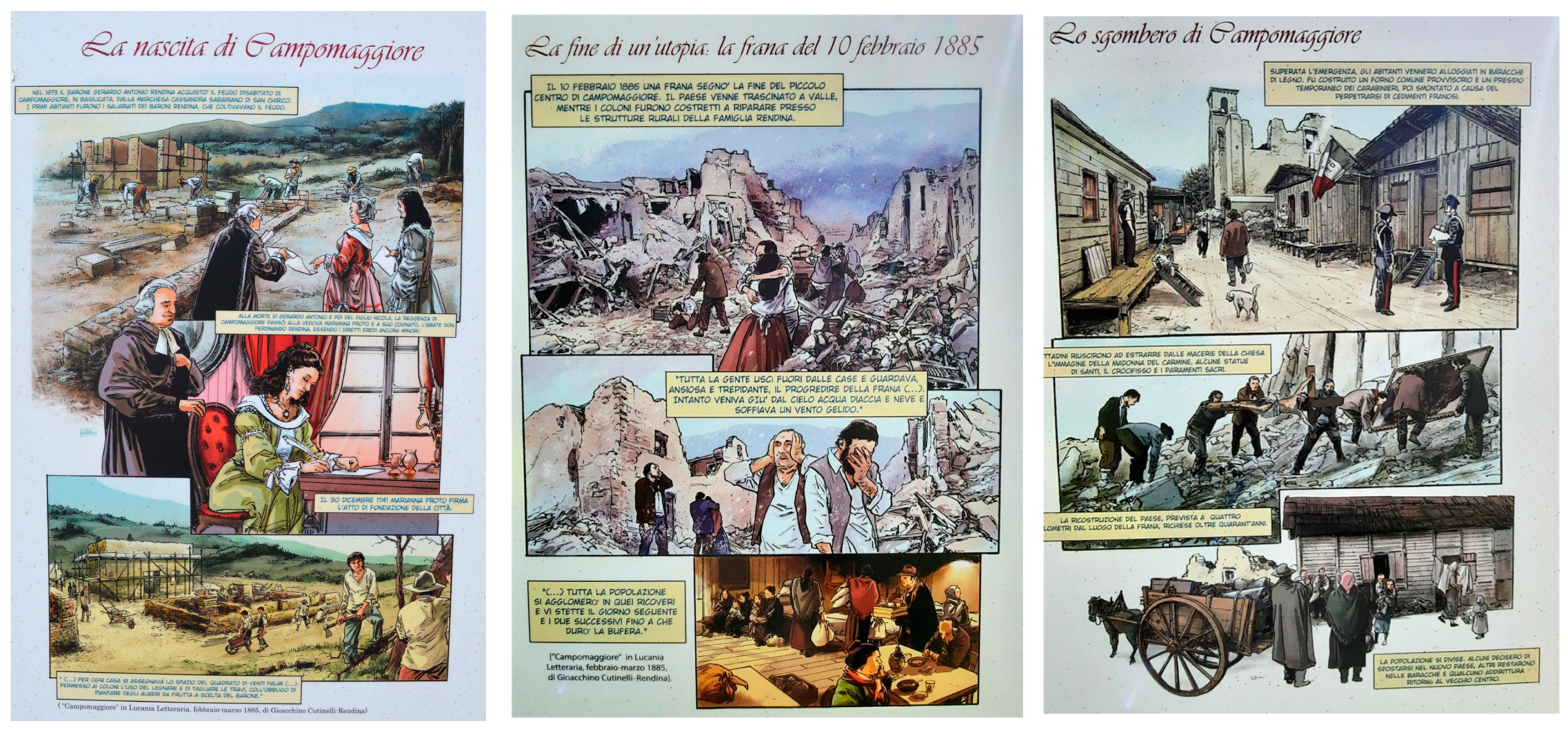
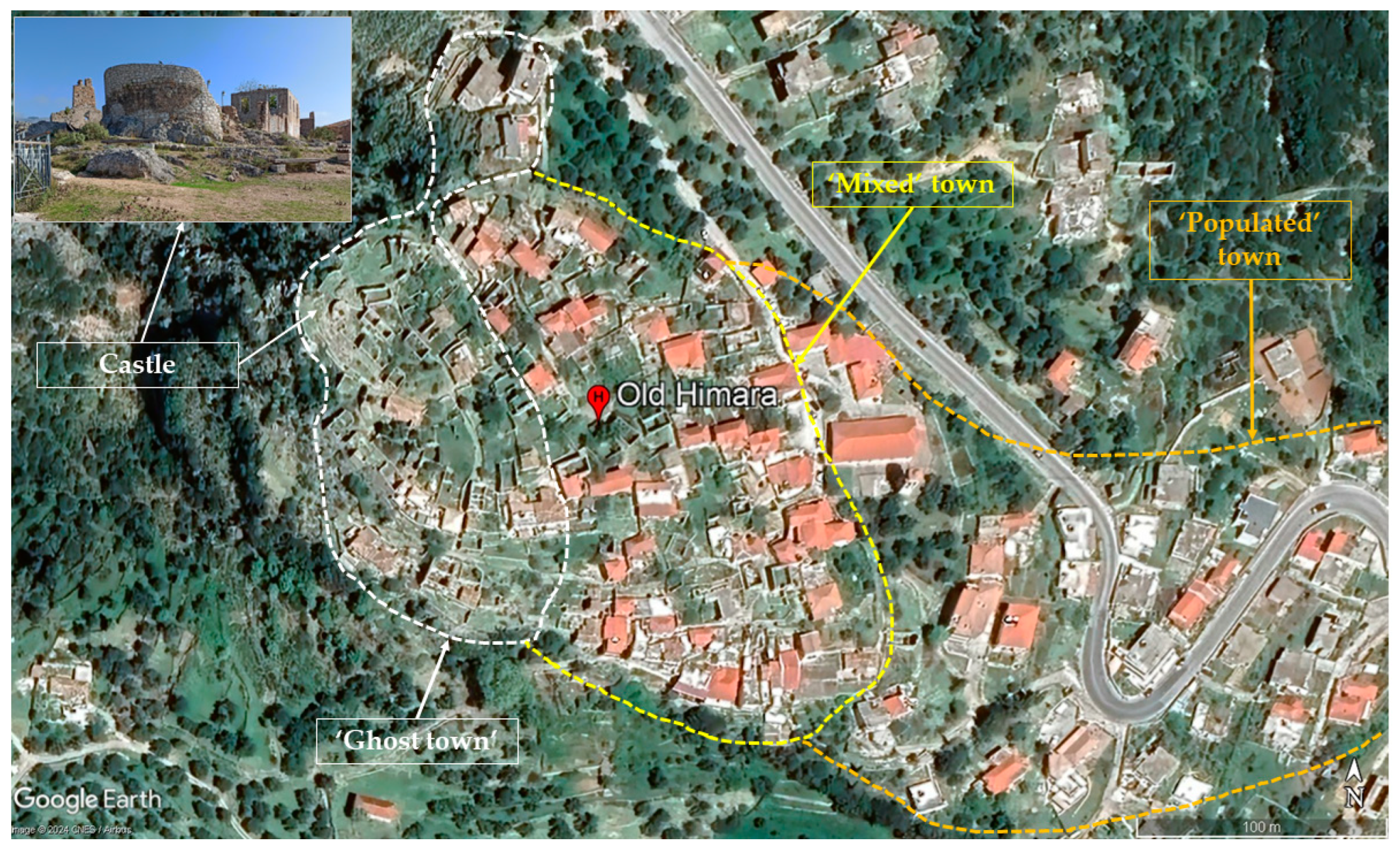

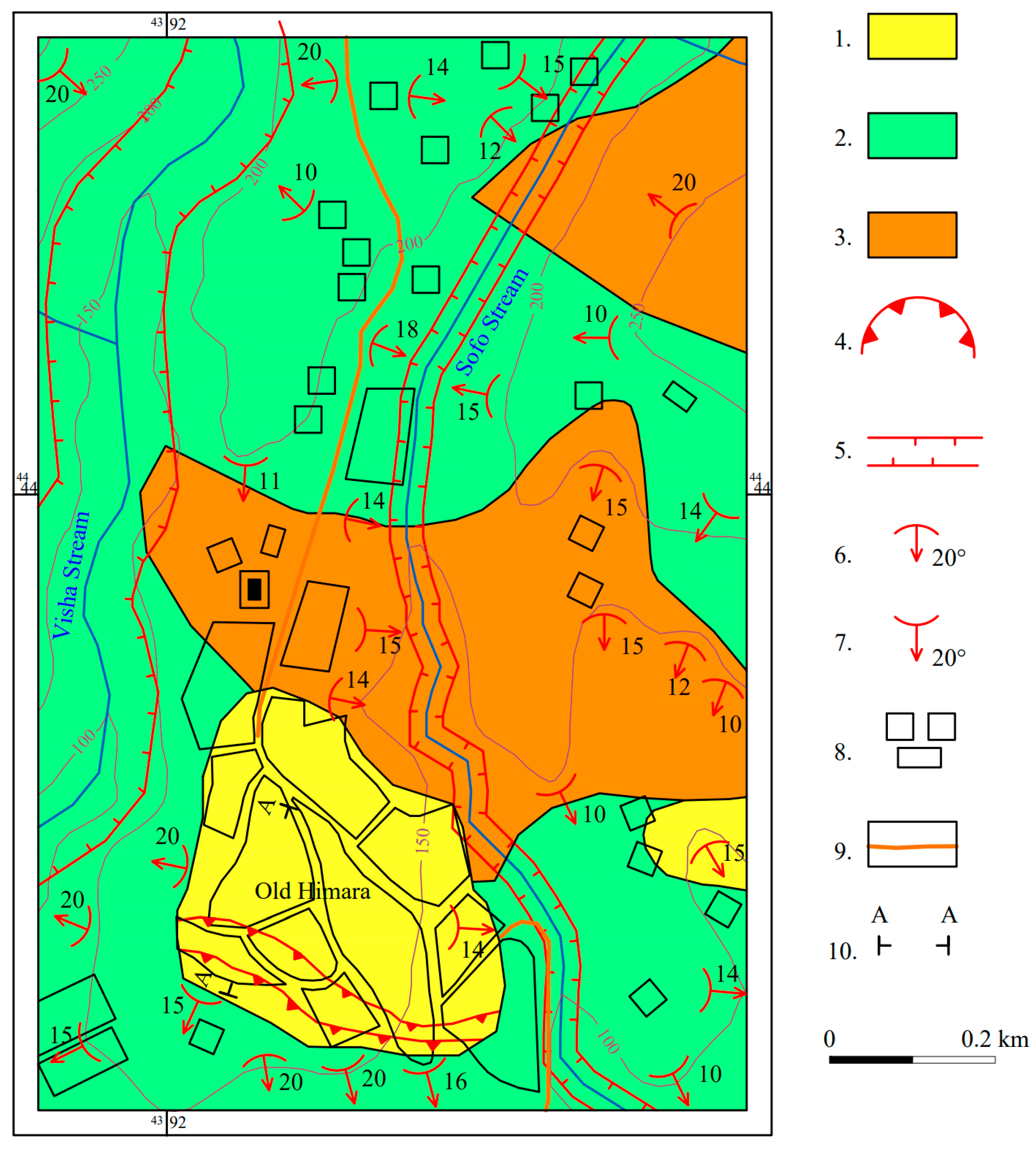

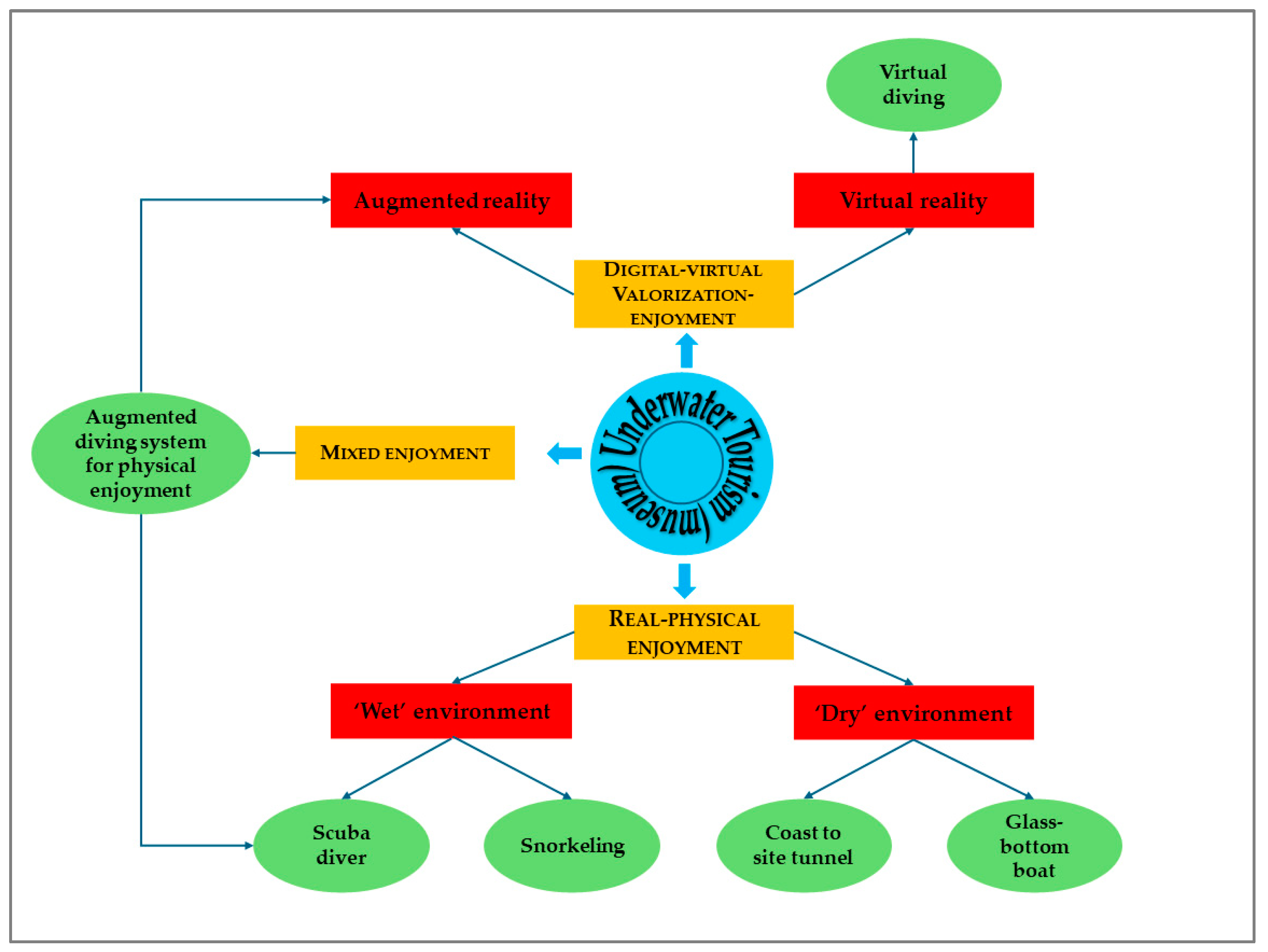
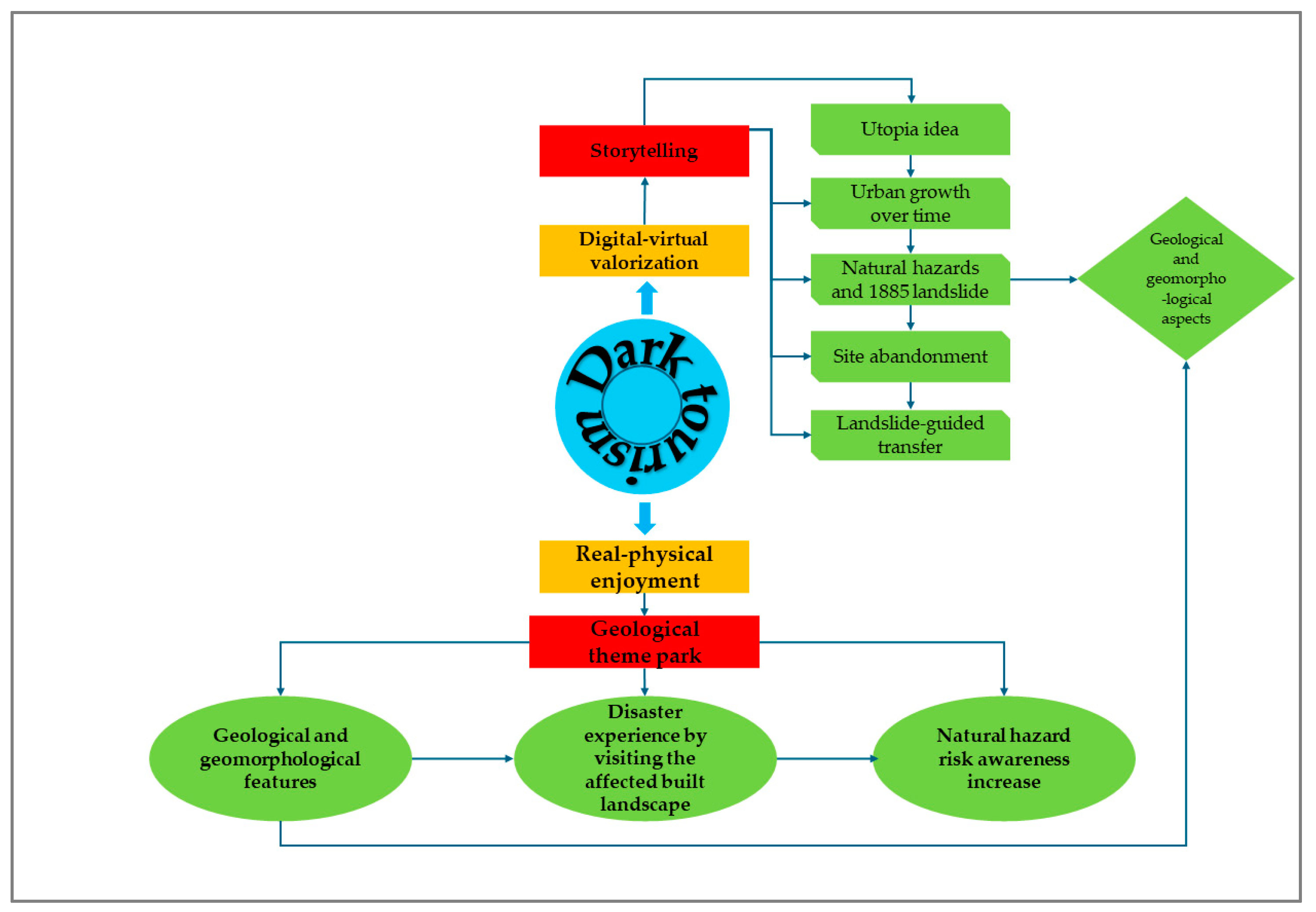

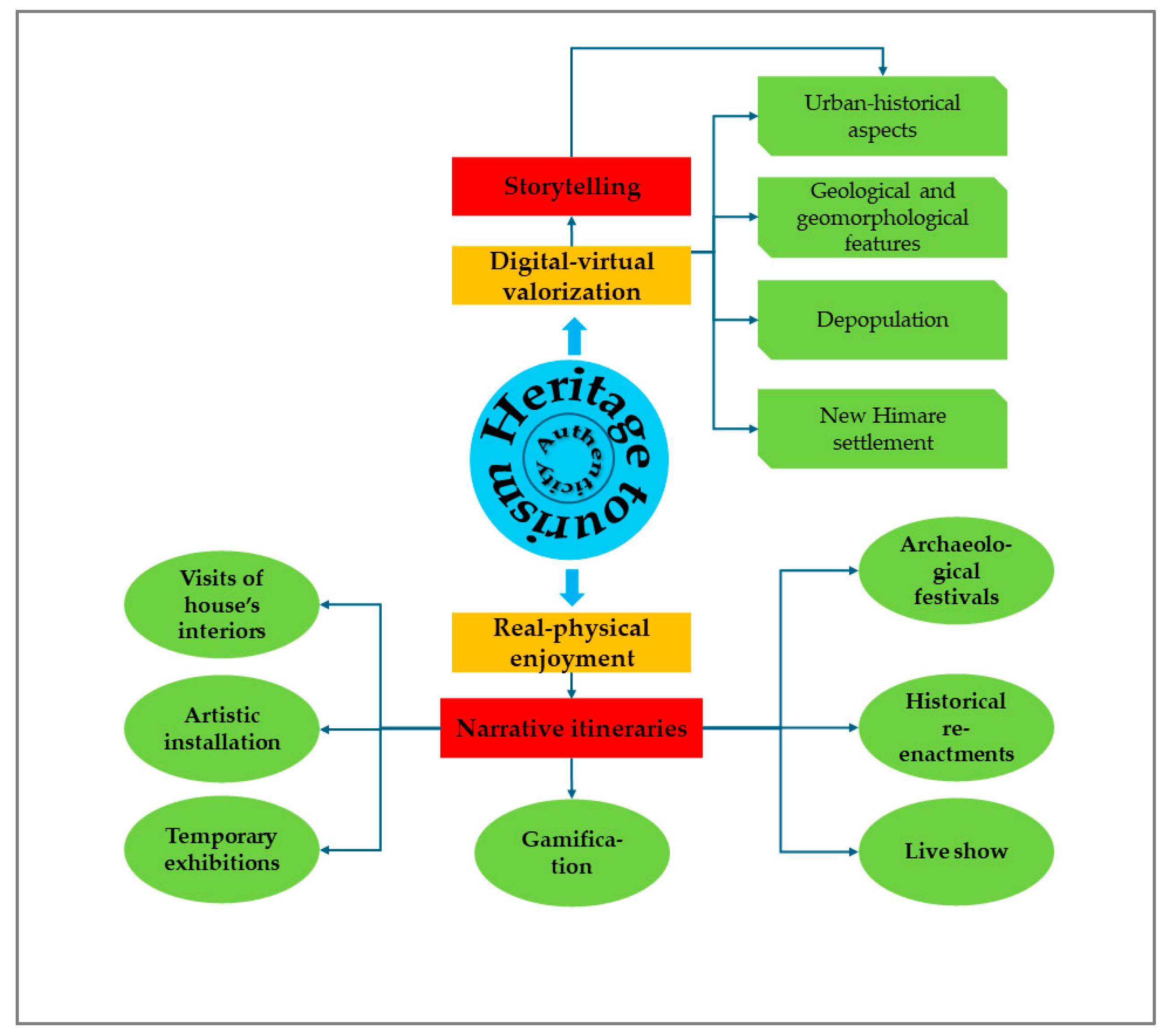
| Date | Lat (N°) | Lon (E°) | M Richter | Hypocentral Depth (km) | Epicentral Area |
|---|---|---|---|---|---|
| 12 October 1851 | 40.50 | 19.40 | 6.8 | 16.8 | Vlora |
| 10 October 1858 | 40.10 | 19.90 | 6.3 | 9.0 | Vlora |
| 14 June 1893 | 40.10 | 19.70 | 6.6 | 6.6 | Himare |
| 21 November 1930 | 40.20 | 19.60 | 6.3 | 5.2 | Vlora |
| 2 December 1930 | 40.30 | 19.60 | 5.0 | 13.7 | Vlora |
| 23 September 1931 | 40.40 | 19.60 | 5.1 | 6.7 | Vlora |
| 25 May 1966 | 40.10 | 19.90 | 5.0 | 8.9 | Saranda |
| 16 August 1966 | 40.10 | 19.90 | 5.1 | 5.1 | Saranda |
| 16 September 1972 | 40.08 | 19.85 | 5.2 | 13.6 | Saranda |
Disclaimer/Publisher’s Note: The statements, opinions and data contained in all publications are solely those of the individual author(s) and contributor(s) and not of MDPI and/or the editor(s). MDPI and/or the editor(s) disclaim responsibility for any injury to people or property resulting from any ideas, methods, instructions or products referred to in the content. |
© 2024 by the authors. Licensee MDPI, Basel, Switzerland. This article is an open access article distributed under the terms and conditions of the Creative Commons Attribution (CC BY) license (https://creativecommons.org/licenses/by/4.0/).
Share and Cite
Gizzi, F.T.; Antunes, I.M.H.R.; Reis, A.P.M.; Giano, S.I.; Masini, N.; Muceku, Y.; Pescatore, E.; Potenza, M.R.; Corbalán Andreu, C.; Sannazzaro, A.; et al. From Settlement Abandonment to Valorisation and Enjoyment Strategies: Insights through EU (Portuguese, Italian) and Non-EU (Albanian) ‘Ghost Towns’. Heritage 2024, 7, 3867-3901. https://doi.org/10.3390/heritage7080183
Gizzi FT, Antunes IMHR, Reis APM, Giano SI, Masini N, Muceku Y, Pescatore E, Potenza MR, Corbalán Andreu C, Sannazzaro A, et al. From Settlement Abandonment to Valorisation and Enjoyment Strategies: Insights through EU (Portuguese, Italian) and Non-EU (Albanian) ‘Ghost Towns’. Heritage. 2024; 7(8):3867-3901. https://doi.org/10.3390/heritage7080183
Chicago/Turabian StyleGizzi, Fabrizio Terenzio, Isabel Margarida Horta Ribeiro Antunes, Amélia Paula Marinho Reis, Salvatore Ivo Giano, Nicola Masini, Ylber Muceku, Eva Pescatore, Maria Rosaria Potenza, Carmen Corbalán Andreu, Annarita Sannazzaro, and et al. 2024. "From Settlement Abandonment to Valorisation and Enjoyment Strategies: Insights through EU (Portuguese, Italian) and Non-EU (Albanian) ‘Ghost Towns’" Heritage 7, no. 8: 3867-3901. https://doi.org/10.3390/heritage7080183
APA StyleGizzi, F. T., Antunes, I. M. H. R., Reis, A. P. M., Giano, S. I., Masini, N., Muceku, Y., Pescatore, E., Potenza, M. R., Corbalán Andreu, C., Sannazzaro, A., Palladino, G., & Bentivenga, M. (2024). From Settlement Abandonment to Valorisation and Enjoyment Strategies: Insights through EU (Portuguese, Italian) and Non-EU (Albanian) ‘Ghost Towns’. Heritage, 7(8), 3867-3901. https://doi.org/10.3390/heritage7080183















